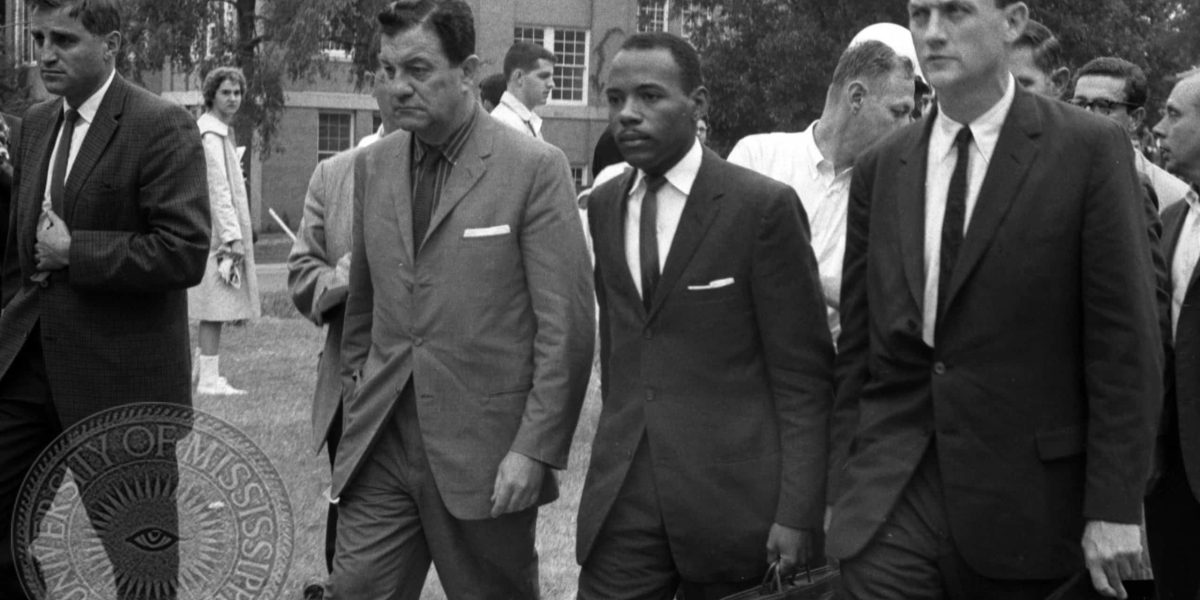A Pivotal Moment in Civil Rights History
October 1st marks 61 years since James Merideth broke the color barrier at the University of Mississippi, a watershed moment in the civil rights movement. This historic event not only marked a significant step towards desegregation but also highlighted the courage and determination of individuals like Meredith, who were willing to challenge the status quo. This article delves into the story of James Meredith’s integration of Ole Miss, exploring its historical context, key events, and lasting impact on the struggle for civil rights.
The Historical Context
To understand the significance of James Meredith’s integration of Ole Miss, we must first examine the historical context in which it occurred. In the early 1960s, racial segregation was deeply entrenched in the American South. African Americans faced systemic discrimination, particularly in education. Access to higher education, especially at predominantly white institutions, was a major battleground in the fight for civil rights.
James Meredith, a native of Mississippi, decided to challenge this injustice by applying to the University of Mississippi, a traditionally all-white institution. His application was rejected multiple times, prompting him to seek legal assistance from civil rights organizations like the NAACP (National Association for the Advancement of Colored People).
The Legal Battle
The legal battle to secure James Meredith’s admission to Ole Miss was long and arduous. It culminated in a landmark Supreme Court case, Meredith v. Fair, which ruled in favor of Meredith’s right to attend the university. This decision was a significant victory for civil rights advocates, as it reinforced the principle of equal protection under the law, as established by the landmark case Brown v. Board of Education in 1954.
Despite the Supreme Court’s ruling, the state of Mississippi was vehemently opposed to Meredith’s enrollment. Governor Ross Barnett openly defied the court’s order, vowing to prevent Meredith’s admission. This standoff between federal authorities and the state of Mississippi set the stage for a dramatic confrontation.
The Confrontation at Ole Miss
On September 30, 1962, James Meredith, accompanied by federal marshals, arrived on the Ole Miss campus to register for classes. Their presence was met with fierce resistance from a mob of white segregationists who were determined to block Meredith’s enrollment. The ensuing violence and chaos resulted in the deployment of federal troops, including the U.S. Army, to restore order and ensure Meredith’s safety.
President John F. Kennedy’s decision to federalize the Mississippi National Guard and send troops to enforce the court’s ruling was a pivotal moment. It demonstrated the federal government’s commitment to upholding the law and protecting the rights of African-American citizens.
After several days of unrest and violence, James Meredith was finally able to register for classes at Ole Miss. His enrollment marked the end of the university’s segregationist policies and was a symbolic victory for the civil rights movement.
The Legacy of James Meredith's Integration
The integration of Ole Miss by James Meredith had far-reaching consequences that extended beyond the campus and state boundaries. Here are some of the lasting impacts of this historic event:
Inspiration for Civil Rights Activism
James Meredith’s courage and determination served as an inspiration to countless civil rights activists across the country. His willingness to face danger and adversity for the sake of equality encouraged others to continue the struggle for civil rights.
Advancement of Desegregation
The integration of Ole Miss was a significant step forward in the desegregation of educational institutions in the South. It sent a powerful message that segregation would no longer be tolerated.
Legal Precedent
The legal battles surrounding James Meredith’s enrollment helped establish important legal precedents that would be used in subsequent civil rights cases. The Supreme Court’s rulings in Meredith v. Fair and related cases strengthened the legal framework for desegregation.
Political Change
The events at Ole Miss also had political repercussions. President Kennedy’s willingness to intervene and enforce the court’s decision demonstrated the federal government’s commitment to civil rights, which played a role in subsequent civil rights legislation, including the Civil Rights Act of 1964.
Symbol of Resistance
The integration of Ole Miss became a symbol of resistance against racial segregation in the South. It showed that even in the face of extreme opposition, progress toward equality could be achieved.
Conclusion
James Meredith’s integration of the University of Mississippi, Ole Miss, in 1962 was a pivotal moment in the civil rights movement. It not only challenged the deeply entrenched system of segregation in the South but also demonstrated the power of legal action and federal intervention in advancing civil rights. The courage and determination of James Meredith and the support he received from civil rights organizations and the federal government serve as a testament to the enduring struggle for equality in the United States. This historic event continues to be remembered and celebrated as a significant milestone in the ongoing fight for civil rights and social justice.





